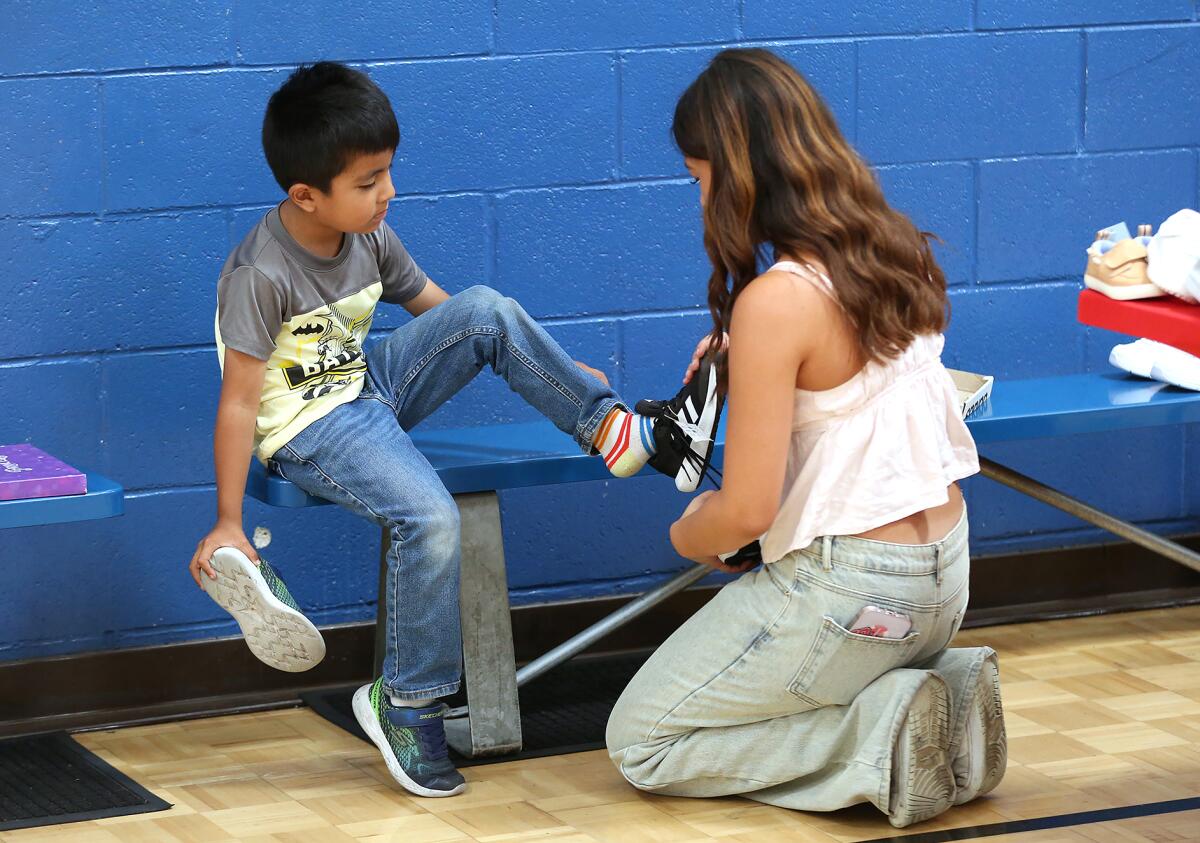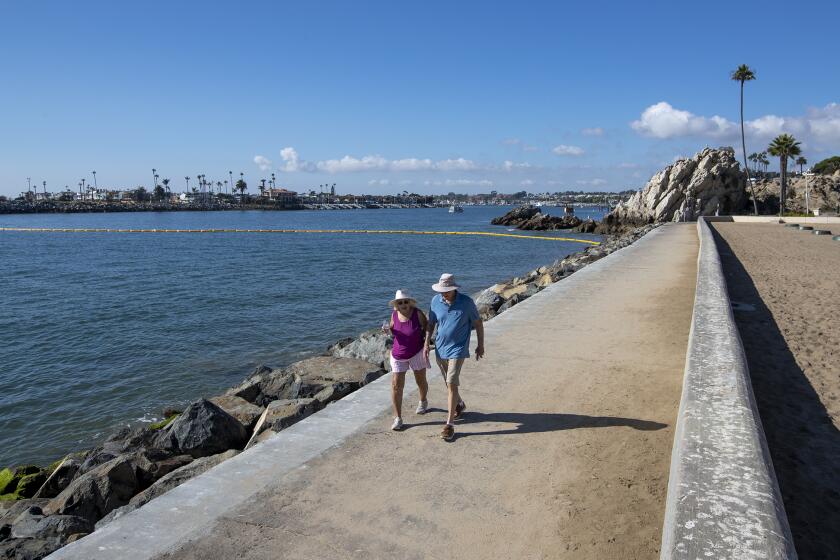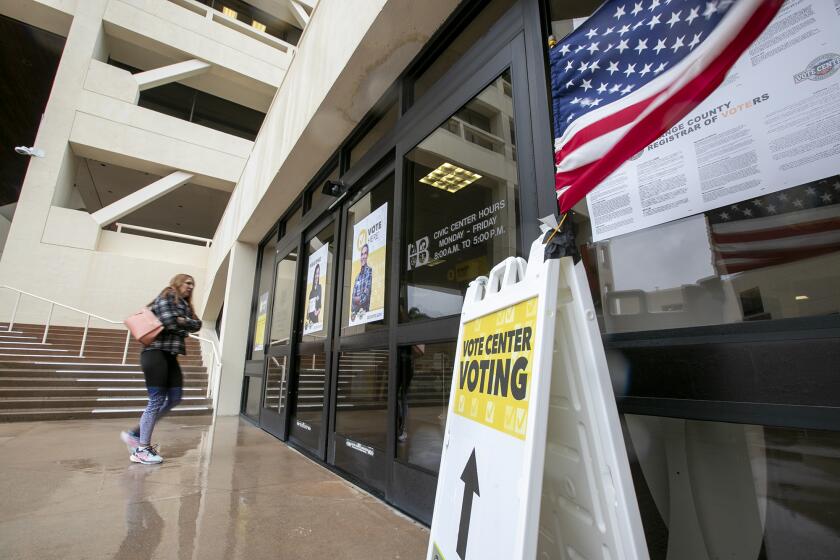Apodaca: In an age of upheaval, schools and their students face daunting challenges

We blinked and now it’s back-to-school season again — always a time of nervous anticipation, perhaps now more than ever considering all the upheaval that students, parents and educators have endured so far this decade.
But, since this is a moment for looking ahead, it’s fitting that we consider what are likely to be some of the key themes and challenges going forward. At the risk of appearing overly pessimistic, let’s just say that those challenges are daunting.
Following are some of the issues that will be front and center this school year:
Learning losses. I’m not crazy about this widely used term. It sounds to me like knowledge is hiding under a random sofa cushion, waiting to be found along with stray car keys. But the salient point is that students overall continue to perform below pre-pandemic educational benchmarks. According to some measures, the achievement gaps are still widening.
Can we still blame lagging academic performance on the pandemic, or is something else going on now? Is the problem due to a complex mix of pandemic-era hangover and other factors such as the lack of foundational skills, high levels of chronic absenteeism and mental health issues? And what do we do about it, because many approaches that have been employed so far are falling short?
These are among the questions that we will be grappling with as educators try to prevent an entire generation from falling so far behind that they’ll never recover. And note that these are more than academic questions. A failure to get a handle on this situation could have far-reaching implications for future job prospects, overall economic growth and standards of living.
Teacher troubles. Ask any teacher and they will likely tell you that it’s not a great time for them. Teacher burnout is rampant. We’re seeing shortages of qualified educators in some areas, layoffs in others.
Attracting fresh blood to the profession has become exceedingly difficult. Fewer young people are signing up for a career that promises intense stress, constant criticism from overbearing parents, frustration trying to engage distracted students, lack of institutional support and low pay relative to other professions.
Will any of these issues be solved this year? Don’t count on it.
Public school finances. There are a few bright spots, such as Proposition 28, a new state law that provides funds to districts to expand arts education.
But that will likely be overshadowed by grim news about the intensifying pressure on public school finances due to the state’s budget deficit, the expiration of federal COVID relief funding and declining enrollment in most districts.
These factors will intensify pressure on school districts. Consider the recent example of Ocean View School District in Huntington Beach. An advisory group recommended that the district sell two of its non-school properties, a decision one committee member said was reluctantly reached but also viewed as necessary for the district’s schools to have funding for maintenance and improvements.
This follows another difficult decision reached by Ocean View last fall to close its Spring View Middle School because of declining enrollment.
Some relief might be coming. Proposition 2 on November’s ballot would provide $8.5 billion to K-12 schools and $1.5 billion to community colleges to renovate, fix and construct facilities. These funds would help, of course; even so, schools will undoubtedly face more tough choices in the days ahead.
Culture wars. The fights over school library books, curriculum and treatment of transgender students will continue unabated. And, given that this is an election year, these issues will be key to voters’ ballot box decisions.
A major focus this November should be on school board races, many of which pit progressive and centrist candidates against far-right activists who seek to impose their policy agendas, many of which are anti-LGBTQ+ but are promoted under the banner of “parental rights.” While nationwide and statewide elections suck up most of the media attention, we shouldn’t ignore these local contests, for their outcomes could have profound consequences.
Mental health, school safety and technology. Each of these topics deserves far more than a brief mention at the end of a column. I expect I’ll be returning to these important issues in the coming school year. For now, I will simply point out that they are not unrelated to each other.
Mental-health professionals have been shouting from the proverbial rooftops about the alarming rise in anxiety-related disorders, depression and suicidal ideation among our youth. It’s no stretch to assume that these health issues are exacerbated by too much screen time, as well as the ever-present fears surrounding school shootings.
Schools are taking steps to address these problems. I recently wrote about Newport-Mesa Unified School District’s new classroom cellphone restrictions, for example, which are helping students focus more in class. And many districts throughout Orange County are continually looking at ways to bolster security, and services and programs to help troubled students.
But the tragic reality of our time is that, despite such efforts, we have a long way to go to fully address the problems plaguing this generation of school kids. Too many students are struggling, both academically and emotionally. That’s the unhappy picture as a new school year gets underway, and we can’t afford to ignore it.
All the latest on Orange County from Orange County.
Get our free TimesOC newsletter.
You may occasionally receive promotional content from the Daily Pilot.




